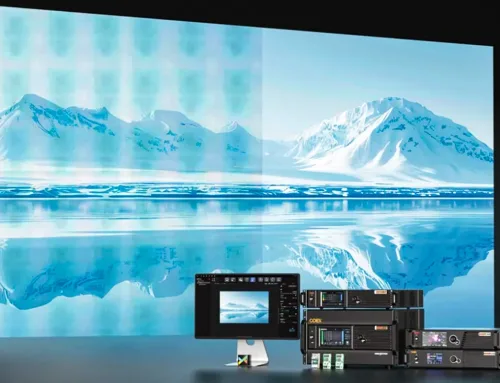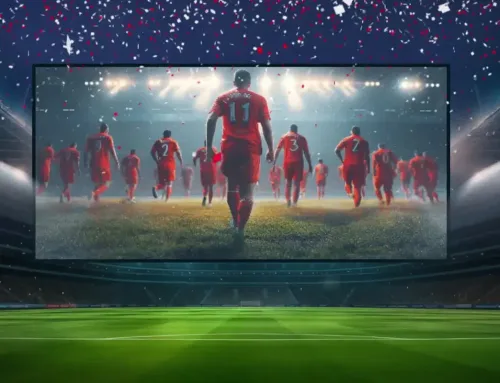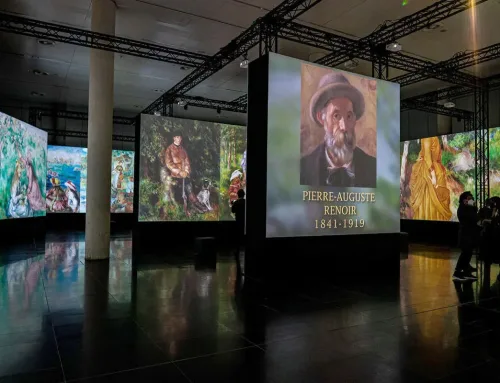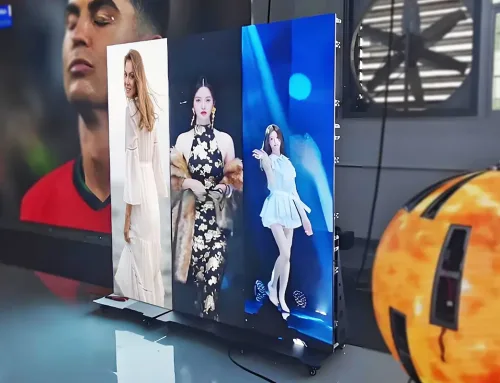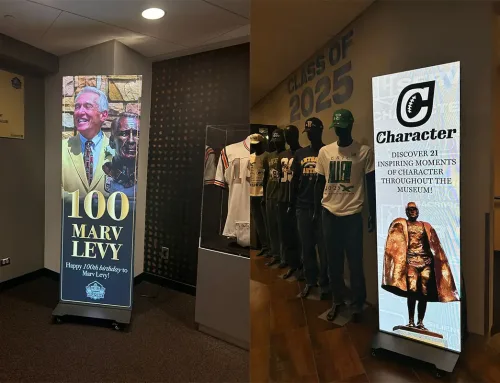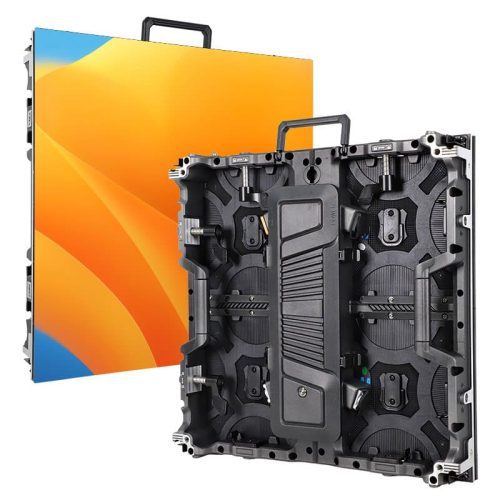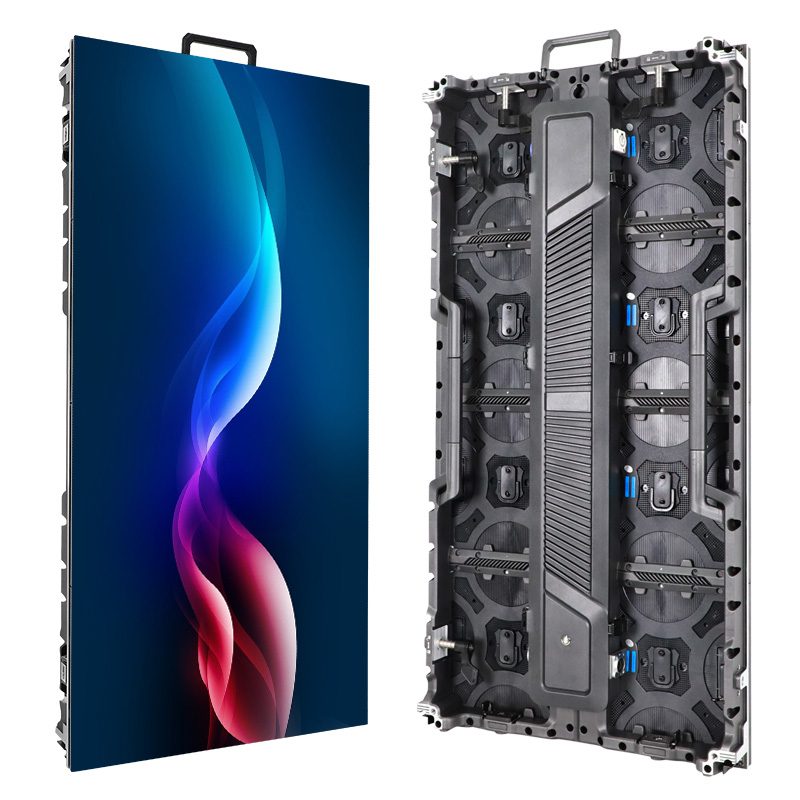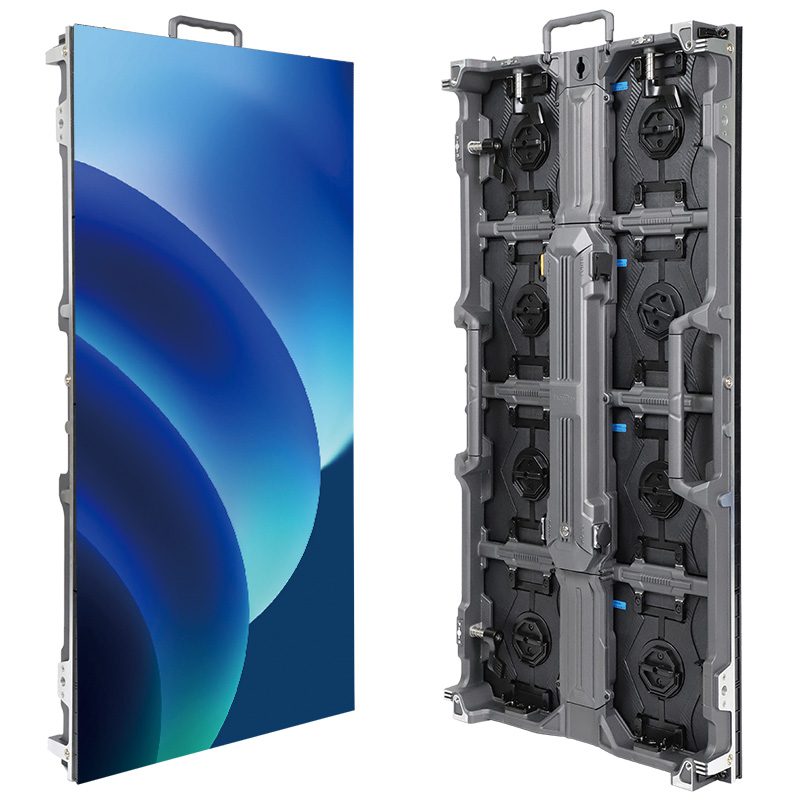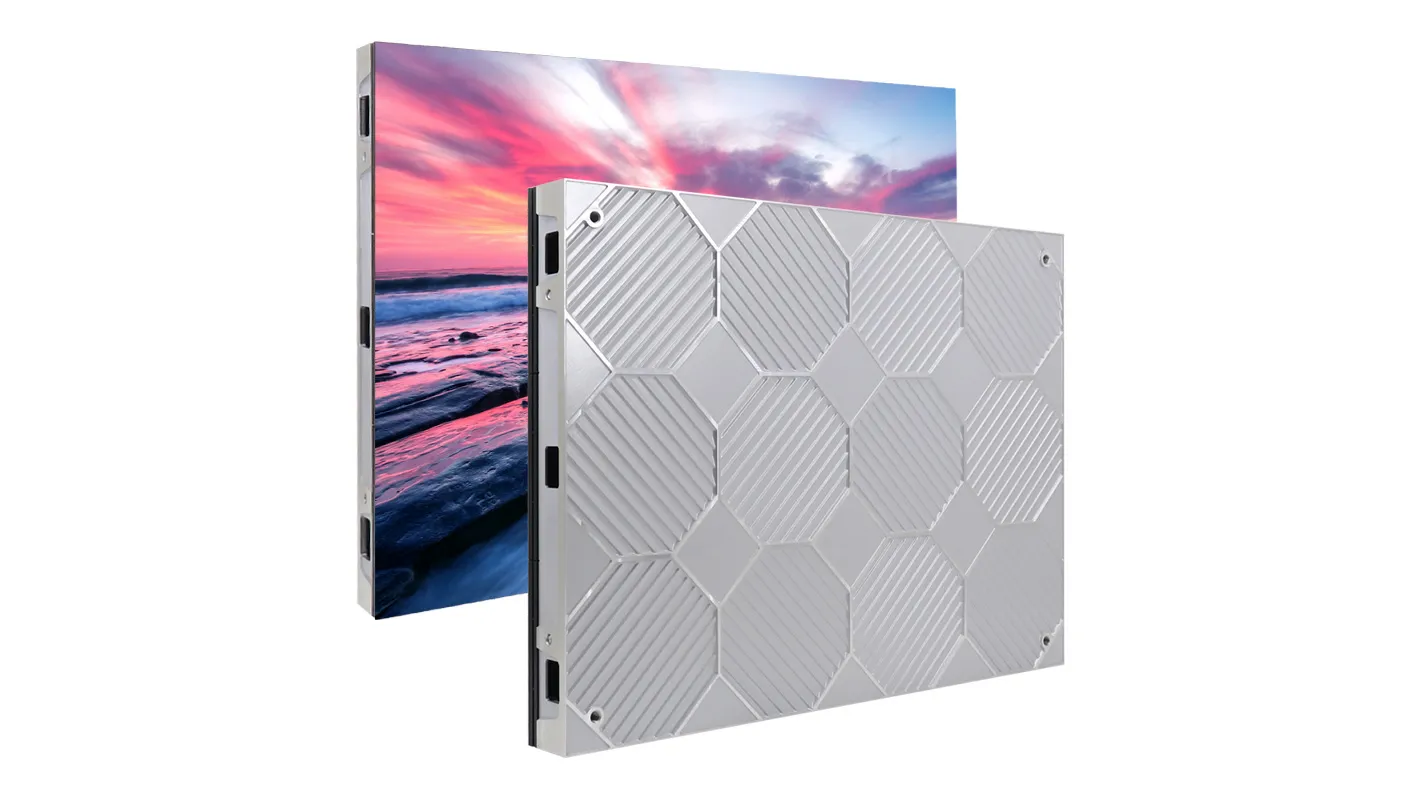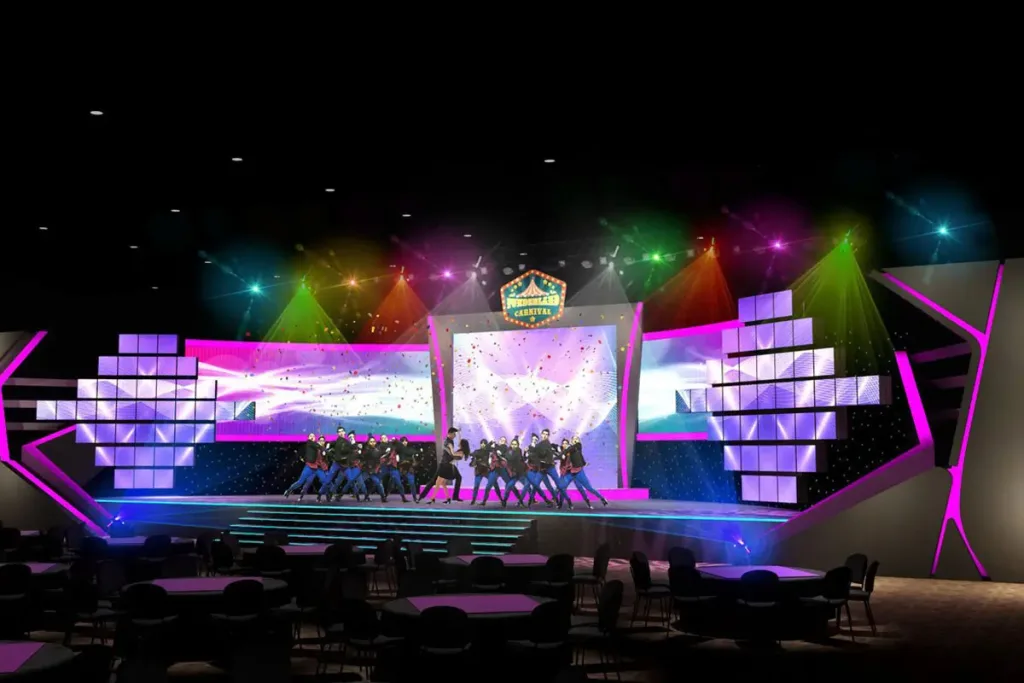Old ways of advertising are no longer effective. Modern people require solutions in the form of outdoor advertising screens or LED displays! The flexible support from LED screens helps advertise videos, texts, or even images where other traditional modes fail!
Selection of outdoor advertising screens can be tricky unless you read our stunning guide. Today, we will discuss advertising LED display screens and understand their application.
catalogue
1.What are outdoor advertising screens?
Outdoor advertising screens are aesthetic displays that often promote a product or service on roads. Advertisements can include images, text, or videos.
You can find such screens on:
- Roadsides and highways
- Shopping centers
- Sports stadiums
- Public squares
- Transit stations
1.1 Types of Outdoor Advertising Screens
There are different types of Outdoor Advertising Screens.
LED screen display
They are the most innovative way to advertise products. High energy efficiency and low upfront costs make LED screen displays a suitable choice for advertising campaigns.
Key Features:
- High brightness and visibility. Whether it is a shade or direct sunlight, they shine bright and are visible.
- Energy efficient. They consume less energy and give an edge with savings. In the long run, they are cost-effective.
- Long lifespan and minimal maintenance due to weather-resistant and quality materials make advertising LED display screens a game changer.
Use Cases:
- Highways, rooftops, stadiums, and shopping plazas.
- Suitable for digital billboards, brand campaigns, event promotions, and real-time updates.
LCD screens
After LED, LCD screens are also useful and often found on roads and in commercial sectors.
Key Features:
- High resolution and image clarity make them an ideal choice for showcasing detailed visuals.
- LCD screens are matchless in shaded or semi-outdoor areas.
- They are often used in interactive kiosks or storefront displays.
Use Cases:
- Bus stops, store windows, retail entrances, and indoor areas facing the outside.
- They are also helpful for menu boards, product promotions, or location-specific advertisements.
1.2 Benefits of Outdoor Advertising Screens
Outdoor Advertising Screens are marvels of innovative technology. Their advanced brightness and day and night working on the roads without wearing out make them lone warriors.
Here are more benefits to know about them!
Unmatched Visibility
If you match the advertising screens with the traditional ads and posters, one thing is for sure— screens are bright and hard to ignore. The aesthetic look and brightness, especially contrast enhanced at night, make the advertisements more engaging and highly convertible into sales.
They stand out in the crowded areas, such as high-traffic roads and congested regions. Therefore, they can create a better impact and be a route to the successful promotion of a product or service.
Cost Effective
Outdoor LED screen displays are expensive. Now, how are they cost-effective?
Look at the long-term perspectives, and you’ll get your answers. The initial cost is high, but it has high durability and requires less maintenance over extended periods.
Therefore, they are a player of hard times on a tough pitch. For installation, you have to invest a one-time setup cost.
That is all. You can run multiple ads on a single screen, changing every time without paying extra for the press releases of a single product.

Higher Engagement
Static images and posters are conventional methods with lower engagement. We are tired of watching the same poster for various days in the exact location.
Compared to it, advertising LED display screens are engaging. They produce dynamic content, videos, and texts that change and draw the attention of the passersby.
Moreover, options like QR codes and product links in the videos can also entice users to make images and scan to find your products. It is a better way to promote a product than a static poster or an ad in the newspaper.
Dynamic Content Control
You don’t have to advertise and fix the ad once in the poster. Dynamic ads are far better and come with higher engagement levels in the market.
Outdoor advertising screens are easier to operate and are connected to the cloud system. A single click through the cloud system on your phone or desktop can control the screen.
The cherry on top is the scheduling of content based on the day and time. Quick updates and time-based ads targeting can better hit the user vibes and provide a significant breakthrough. Without additional hardware, you can run multiple ads and videos on the screen without any extra income.
Weather Resistant and Durable
Outdoor Advertising Screens can be LED, LCD, or projection displays. The dust and moisture in different seasons can affect the screen.
So, are they compatible? The answer is yes. The IP-rated environmental resistance and moisture control help operate these screens flawlessly.
The sealed system avoids the collection of dust. Even if there is dust trapped, you can inspect it promptly and clear it up to prevent the clog. There is minimal maintenance required with an extended durability and long-term performance. Users can enjoy such tools better.
2.Key Points to Look into when selecting the outdoor advertising screens
Selection of the outdoor advertising screens isn’t all about the brightness and engagement of the ads. In addition to visibility, there are a few more factors to judge and estimate. We have listed the primary points with details.
2.1 Understanding Your Audience and Location for Outdoor Advertising Screens
Ask yourself, where are you installing the outdoor advertising screens, and who is your target audience? It matters a lot because advertising screens change according to the location. A pedestrian constantly interacts differently with the ads compared to a driver at high speed.
Here are a few things to notice.
- Traffic Type. Is your audience walking, driving, or waiting?
- Viewing Time. Will the audience glance at the screen for a few seconds or stop for several minutes?
- Placement Height and Angle. For drivers, ads at higher angles are better. At the same time, pedestrians engage with ads at eye level.
- Obstacles: Are there buildings, trees, or other signage blocking visibility and hurting your engagement?
Here are a few tips to choose the right advertising screen.
- Use larger, high-brightness LED screens for roadside and highway to maximize visibility.
- Opt for high-resolution LCDs if your audience is mostly pedestrian or retail-focused environments.
- Consider audience behavior in the selection of an outdoor LED screen display.
2.2 Choosing the Right Size and Resolution for Outdoor Advertising Displays
Too many big screens are a headache and might mismanage the whole advertising campaign. They can cause neck muscle pain if they are too large and protrude upward. Too small screens can block visibility and are ineffective in various cases.
Appropriate size and resolution matter a lot. Blurred screens are always hated, while users love to watch clear and high-resolution videos.For more details on choosing the right screen size, check out our guide on LED screen size selection.
For the right size and resolution, you should know the following aspects.
- What is the pitch, pixel, or clarity of your videos?
- How far away is your target audience? A distance of multiple meters can cause a severe impact on the visibility.
Follow the tips below to get the right size and resolution.
- Match the screen size with the audience distance and available space.
- Use larger screen areas to engage the fast-moving traffic. It will ensure readability and draw the attention of the viewers.
- Maintain a balance between the distance and screen resolution. For example, a resolution that is too high on a far-off screen wastes the budget, while too low up close will look pixelated.
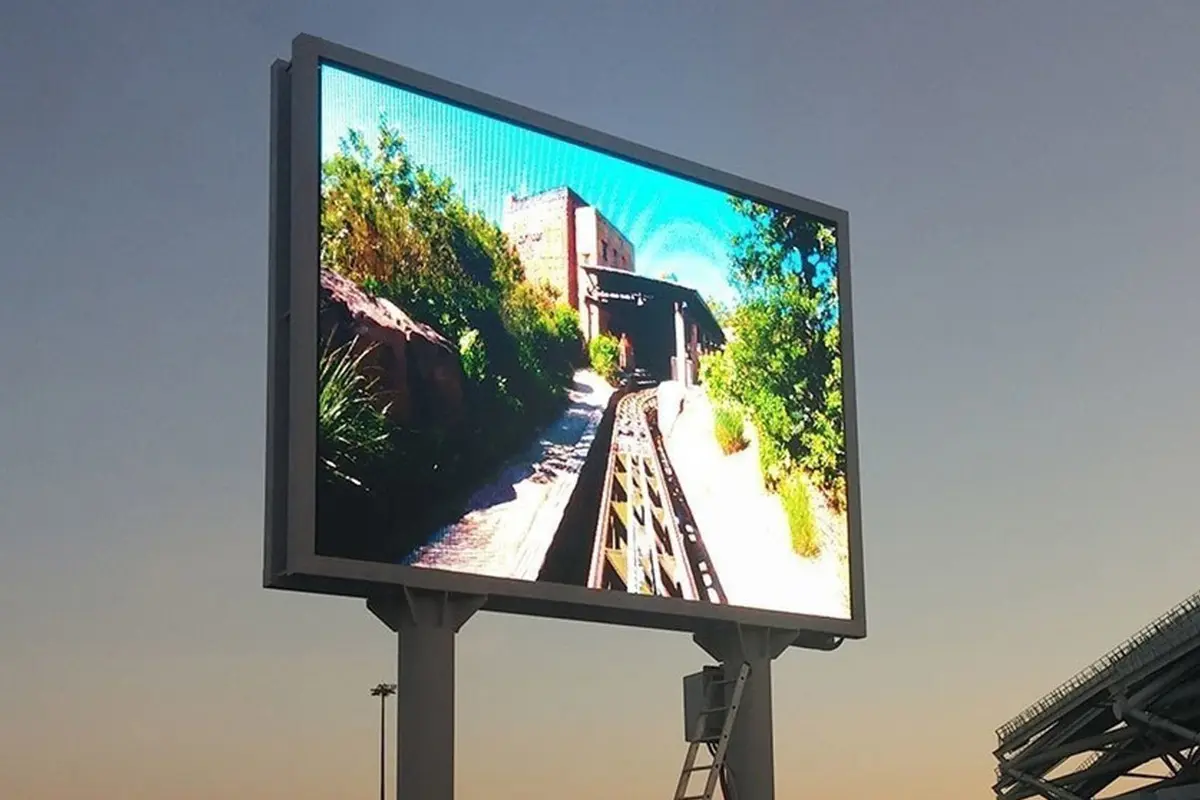
2.3 Why Brightness Matters in Outdoor Advertising Screens
Brightness is a crucial factor and can decide on this aspect. Too high brightness can hurt the eyes and keep viewers away from the screen. A setting that is too low fails to create an impact on the users and might feel faded.
Based on the region, daylight, and the overall appearance of the environment, the required brightness can be affected. Remember, you should place a bet on the suitable brightness range.Check out our LED display brightness guide.
Usually, we measure the brightness in nits. Here is more to know.
- 2,000–3,000 nits. It is suitable for shaded or semi-outdoor areas.
- 3,500–5,000 nits. Suitable for general outdoor use in daylight.
- 5,000–7,000+ nits. A high brightness is good for direct sun exposure or wide-open spaces.
Here are a few tips to select the appropriate brightness of the screen.
- Choose screens with auto-brightness adjustment. It will adjust brightness based on the requirements and extend LED life.
- Avoid screens under 2,000 nits for outdoor use unless they are fully shaded.
- Check brightness uniformity. Ensure consistent lighting to make your content look patchy.
2.4 Ensuring Durability in Various Weather Conditions
You are deploying the outdoor advertising screens on the roads and commercial areas. Extreme weather conditions and fluctuations always hit the screens. So, how can the screen be of low quality?
Start your game with weather-resistant screens, such as LED screens. Consider the following features.
- IP Rating. IP65 or higher for outdoor use
- UV Protection with Anti-UV coatings prevents screen fading or damage from sunlight
- Temperature Tolerance should be in the operating range of -20°C to 60°C.
- Corrosion-resistant materials should be there. It is specifically crucial in coastal or industrial areas.
Tips for selecting the correct outdoor LED screen display.
- Always ask for climate certification, depending on your environment.
- Ensure the enclosure and power supply are compatible and resistant to all types of weather conditions.
- Screens in areas with snowfall or storms must have vibration resistance and proper drainage systems.
2.5 Optimizing Energy Efficiency for Long-Term Use
Power consumption decides on the power source compatibility with the outdoor LED screen display. Outdoor Advertising Screens are energy-intensive and drain. Spikes can occur during the power implementation and might risk your devices.Check out our energy-efficient LED screen guide.
Here are a few things to consider.
- Wattage per square meter (W/m²). It is a simple formula to indicate energy efficiency.
- Display size. If the display size is larger, the energy consumption is higher.
- Brightness levels. If you keep brightness at 70% or more, energy consumption skyrockets. To stay within limits, you should check the brightness levels.
- Energy-saving features. It helps automate dimming and Sleep/standby modes during off-hours. You can save energy better.
Assess and select the outdoor advertising screens:
- Use energy-efficient LED modules and smart drivers. They consume less power and minimize heat production.
- Be eco-friendly and choose solar-powered options for remote areas to get energy independence.
- You can ask your suppliers about the power usage estimates, depending on your region and display time.
2.6 Advanced Control Systems for Outdoor Advertising Screens
The control system defines the process of how you can update and manage the content. It is necessary because you need to update your ads in real time and change as needed.
The advanced control system can make it possible. There are a few features to hunt down in your control system before finalizing.
Features are:
- Cloud-based or network CMS (Content Management System) provides easy control from miles away!
- Multi-display control enables the user to run multiple ads and videos from different advertisers.
- Content scheduling by time/date/location elevates the ease of controlling the content.
- Health monitoring and diagnostics can inspect the system and detect faults in the early stages.
- The offline fallback feature provides access to stored content if the internet shuts down.
Tips to select the right outdoor advertising screens are:
- Always select a plug-and-play system that provides one-click control of the system.
- Ensure software is compatible with your file formats and design tools.
- There should be support for video, text, RSS feeds, and dynamic data.
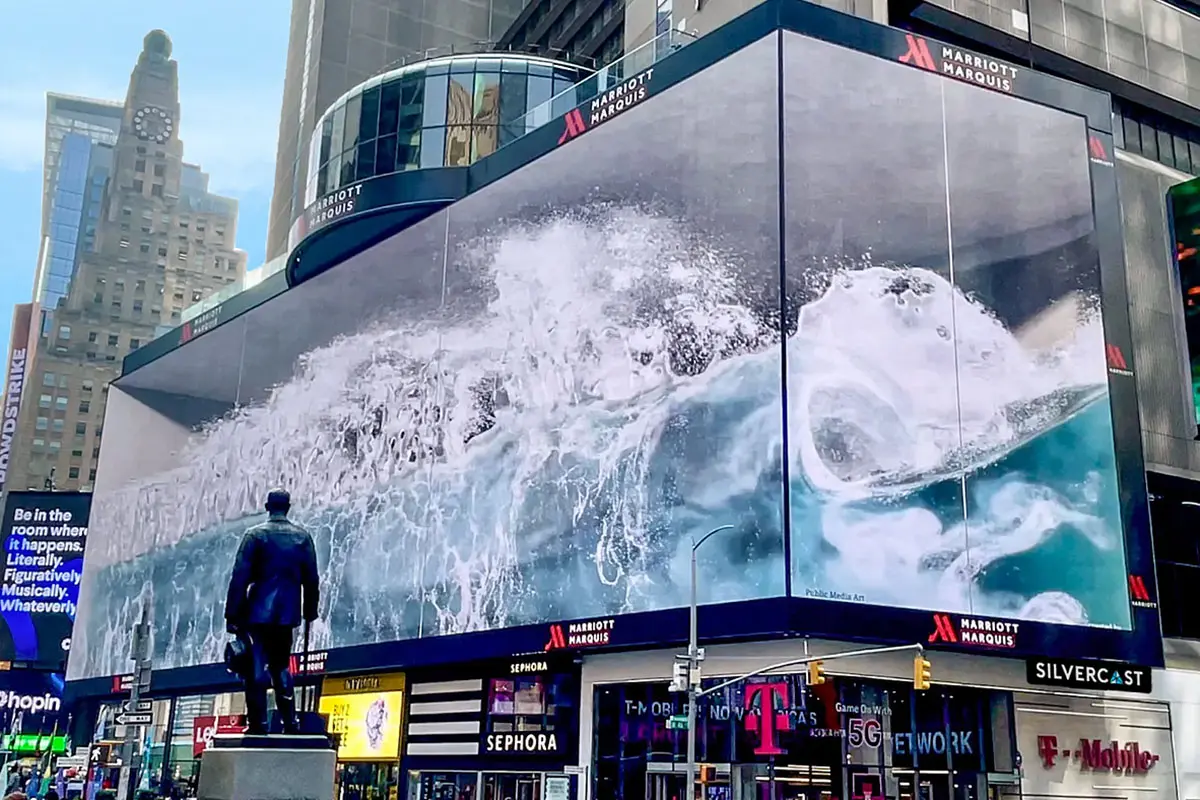
3. Outdoor Advertising Screens: Installation & Maintenance Tips
Installation and maintenance can manage your outdoor advertising screens for extended periods. Here are a few tips for installation and maintenance.
Step 1: Hire a professional installer
A professional installer can minimize the chances of errors and knows how to install.
It provides the following amenities.
- Safe electrical wiring and grounding.
- Compliance with local building codes.
- Secure screen mounting to resist wind and vibration.
So, select a professional installer service.
Step 2: Choose the proper mounting structure
Because of direct exposure to the external environment, a resilient mounting structure can make a difference here. Here are a few durable and sustainable mounting solutions.
- Wall mounts
- Pole mounts
- Rooftop structures
- Mobile trailer systems
Step 3: Ensure proper ventilation
Do you know how power dissipates? It is the heat form that causes the overheating if not appropriately managed. To optimize the system, you can:
- Use enclosures with built-in fans or passive ventilation.
- Maintain clearance between the screen and the wall for airflow.
- Install screens with temperature sensors.
Step 4: Verify Surge protection
Surge protection is necessary otherwise you get instant damage to the equipment. To avoid surge protection, you should get:
- Surge protectors
- Voltage regulators
- Grounding cables for lightning
Step 5: Test
After installation, check the live advertisements. Confirm there are no errors. Also, test various advertising modules.
Maintenance Tips
Maintenance can extend the lifespan of the outdoor advertising screens. You can also read this article LED screen repair tips.Here are a few tips.
- Inspect and clean regularly. Set a weekly or monthly timeline to inspect and check the screens. Clear the dust and debris to make them clean.
- Check pixel issues. If images are pixelated, upgrade to increase resolution.
- Assess faulty components. If something is not working, you can replace or repair parts.
Troubleshooting Outdoor Advertising Screens
| Issue | Possible Causes | Recommended Solutions |
|---|---|---|
| 1. Screen not turning on |
|
|
| 2. Flickering display |
|
|
| 3. Dead pixels |
|
|
| 4. Content not updating |
|
|
| 5. Screen overheating |
|
|
4.Frequently Asked Questions
5.Conclusion
Outdoor Advertising Screens are the game-changers in advertising campaigns. The multiple advertisements with high visibility can promote better.
Outdoor LED screen displays are the ideal choices among these. But choose a reliable supplier by looking at the necessary features and specifications.


